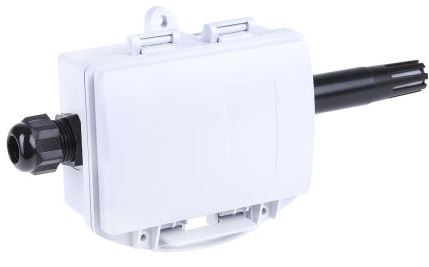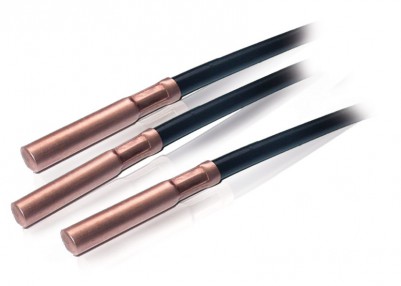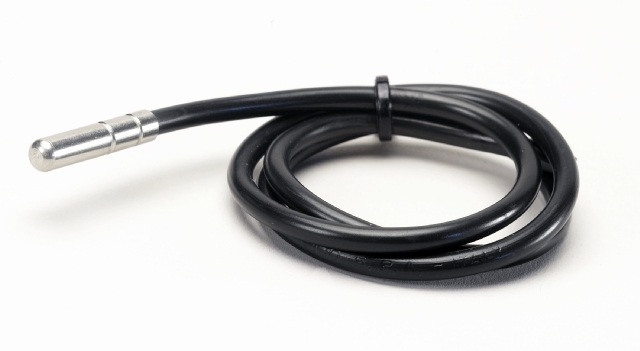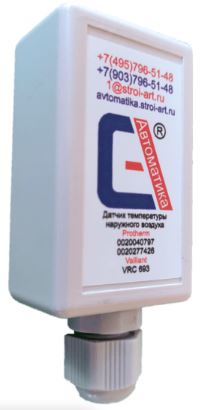When operating aquariums, heating devices and similar devices, a person needs to constantly monitor the temperature inside the system. To carry out this process, you will need a special device that will display information on the screen, so it will be easier for the user to take readings. To choose the right equipment, you need to know the main technical parameters and types of models.
The editors of the site "bestx.htgetrid.com/en/" have prepared for you a rating of the best temperature sensors for 2020.

Content
How does the sensor work?
Several simple devices are used to control the temperature of the coolant, the most common are automatic devices, blocks responsible for safety, special units.
So that the operation of this equipment does not cause problems, thermal sensors are used that receive and transmit a signal to the main control unit. Most often, products are equipped with a display that displays the current reading of the heating of the liquid. This allows you to instantly identify the problem and take the correct action to fix the problem.
There are only three models of temperature sensors, some are capable of immersing completely into the coolant, others are located in the external part, and the latter are used for installation in the room itself. Equipment is selected based on the tasks, since some types cannot show the exact result.
It is important to know that some devices can work regardless of the state of the system and can be easily replaced in the event of a breakdown, while the second are part of a complex mechanism. The latter is often found in heating equipment, where temperature control is important.
Regardless of the installation method, the principle of operation is the same - the conversion of indicators into an electrical signal, understandable to the controller. Thanks to this solution, a person does not wait a few minutes for the information to be transferred to the main unit. Everything happens in seconds, in some cases, milliseconds. Measurement accuracy and sensitivity do not change during this process.
However, there are also differences. For example, some sensors can be equipped with special features that make it possible to take readings in a non-standard environment or simplify the display of information on the main screen. All of these criteria are taken into account at the time of purchase.
Thermal sensor classification

Temperature products differ in several main parameters. For example, according to the method of information transmission, the installation option, the reading algorithm, etc. To better understand what to look for, you need to study each aspect in more detail.
Differences in transmission method
According to the broadcast method, the equipment is divided into two types:
- Wired models;
- Wireless.
The first option is the oldest.Wires are necessary for the product to connect to the main unit and transmit information about measurements. Today, this type is not so popular, since it has been supplanted by more modern devices that can work without a dozen wires. However, wire elements are still found in simple designs because they are inexpensive, lightweight, and highly accurate. They also serve many times longer than their counterparts, which is also taken into account when choosing.
Another point to keep in mind is that wired temperature sensors can only function properly in a system made by the same manufacturer. Failure to comply with this rule can lead to incompatibility of devices, which makes the readings inaccurate, or measurements will not be carried out at all.
Wireless devices are in great demand today. The signal is transmitted by a special transmitter and received by an antenna. The main advantage is that they can be installed in any system, while they will always be compatible with various manufacturers. As for the external conditions, it depends on the model, as some are installed in a separate room, while others are able to function even on the street.
To choose the right wireless sensor, it is important to consider three main criteria:
- The presence of a battery and its capacity;
- Minimum and maximum error;
- Working distance.
Some manufacturers of heating systems support the possibility of replacing a wired sensor with a wireless one and vice versa. Such a solution can significantly increase the demand for products or modernize an outdated design. However, it is not recommended to carry out such work without experience in the electrical installation field.
Where are they installed?
Sensors are divided into several categories according to the place and installation option:
- Overhead. Devices of this type are mounted directly to the heating part;
- Submersible. The sensor is placed under the liquid;
- Room. Installed in the room where the equipment is used;
- External. Suitable for outdoor installation.
In complex and expensive systems, 2-3 sensors are often used at once, which are fixed in various ways. The information coming from them is distinguished by a minimum error. Therefore, it is much easier to take readings.
Differences in the method of removing temperatures
For demonstration of indications, products are divided into two types:
- Bimetallic;
- Alcohol.
For the first model to work, two plates are required, which are made of special materials. An arrow is used as the main element to display information, which is located behind the digital indicators. The principle of operation is simple: when the temperature changes, one of the metal plates begins to gradually deform, which creates some pressure on the arrow, which is why it moves to the right or left. The main advantage of the arrow specimens is the minimum error, but there is a drawback - it takes a lot of time.
Alcoholic products are free from this drawback. The products function using ordinary alcohol, which is placed in a special flask that does not have contact with oxygen. So, when heated, the solution begins to expand, which creates some pressure. This design is simple and highly reliable, but reading readings is not so convenient, so auxiliary equipment is connected.
Alcohol and bimetallic appliances are most often installed in heating systems. The devices make it possible to monitor the current state of the coolant and take appropriate action to prevent emergency situations.
What to look for when choosing?

When choosing a temperature sensor, it is important to consider 6 main criteria:
- The temperature range, this allows you to use only the option that is suitable for a specific system, because somewhere it is important that the temperature does not exceed 120 degrees, and in other devices this is considered a minimum indicator.
- How do you plan to use the sensor? Do you need a submersible model or a standard one.
- Where measurements are made in a difficult chemical environment or in water. The external design of the temperature sensor depends on this. Of course, if the contactless option is used, then this rule can be disregarded.
- The life of the product before maintenance or complete replacement. Indeed, behind the expansion of the assortment, poor quality is often encountered, which is why cheap models fail after 2 months of use.
- Technical indicators: dimensions, special features, information transfer time, screen resolution (if any).
- Output signal magnitude.
Some complex systems also take into account the housing material to ensure that the equipment can withstand high mechanical stress. When operating indoors, it is necessary to choose the correct design and dimensions so that the equipment does not stand out from the general background.
Rating of sensors for measuring temperature in liquid
Alentis Electronics 1-wire, (THS)

A high-quality device designed for connection to NetPing equipment. The device supports 1-wire interface. Withstands temperatures up to 125 degrees, which allows you to easily operate the product in the heating system. For the connection, RJ12 plugs are used, while in which socket the connection will be made does not make much difference.
The length of the wire is 2 meters, the whole system is one, so it will not work to lengthen the device. The main element operates on the basis of a domestically produced single-chip thermometer. The measurement accuracy is 0.5%, which is a positive value. The minimum temperature value at which the device will operate is -55 degrees.
Sold at a price of 1,280 rubles.
Advantages:
- Durable body;
- Good tightness;
- Withstands negative temperatures;
- Connects to NetPing;
- Accuracy.
Disadvantages:
- Not found.
MF58

A budget option, the accuracy of which is 1%. The maximum resistance is 10 kOhm. The device has wide application, so a person can easily connect it to any system and immerse the head. The wire is covered with a reliable insulating layer that can withstand high temperatures and does not deform.
The average price is 250 rubles.
Advantages:
- Efficiency;
- Tightness;
- Cost;
- Withstands temperatures over 100 degrees;
- Small percentage of rejection.
Disadvantages:
- Not found.
Simpal wired temperature sensor

A convenient device with a length of up to 2 meters, which allows you to place it in a convenient place. The design is made in a standard way and does not differ from previous copies. Connects to Simpal systems, but also able to function separately. Manufacturer's warranty - 1 year. Connector type - 3.5 mm. The wire is completely sealed to withstand immersion under water.
Sold at a price of 490 rubles.
Advantages:
- Value for money;
- Compatibility with branded products;
- Optimal wire length;
- Good thermal sensor.
Disadvantages:
- Not found.
External temperature sensor
TECH ST-291 R

A wireless device capable of monitoring air temperature. The connection to the main unit is carried out using radio communication. Suitable for home use, since all the information received from the device will not be suitable in an area where maximum accuracy is important. The set contains two AA batteries, instructions and warranty. The manufacturer of the device is Poland.
The average price is 2,500 rubles.
Advantages:
- Simple installation;
- Minimum error;
- Autonomy;
- Guarantee.
Disadvantages:
- Not found.
Danfoss ESMT (084N1012)

A more expensive option, where the main element is a platinum thermometer. The equipment is a two-wire device with replaceable cables. To make contact with the pipes as tight as possible, the manufacturer equipped the equipment with a special spring. The housing has a degree of protection IP54. The maximum operating temperature is 50 degrees. The outer part is made of polycarbonate-based ABS.
The average price is 3,800 rubles.
Advantages:
- Reliability;
- Strength characteristics;
- Efficiency;
- Tight fixation.
Disadvantages:
- Not found.
Protherm 0020040797 and Vaillant VRC 693

Excellent outdoor sensor, compatible with many devices. The maximum operating temperature is 50 degrees, which is the optimal value for a similar model. Able to work separately from room thermostats, but also supports working with them. The maximum error is 1 degree. Uptime warranty - 3 years. The degree of protection of the case is IP54, which makes it possible to install the device in any room.
The average price is 2,000 rubles.
Advantages:
- Small error;
- Acceptable price;
- 3-year warranty;
- Small size;
- Works with many systems.
Disadvantages:
- Not found.
Temperature sensor for the "Warm floor" system
Thermoreg TI-300

The thermal sensor has two features - simple operation and excellent appearance that will fit into every design. The device can be used to control the temperature in the room, as well as in the underfloor heating system. However, in addition to viewing the readings, a person can change the values in any direction, which allows achieving the perfect balance.
The device supports the ability to adjust the power, which allows the device to operate without sensors. The control is touch-sensitive, there are no loud clicks from mechanical buttons. The start takes place in a few seconds, so the user will not waste time. The ECO function is provided for switching to energy mode. The warranty is 3 years.
Sold at a price of 4 400 rubles.
Advantages:
- Fast start;
- Child Lock function;
- Power regulation;
- Individual settings;
- The ability to display the temperature in real time.
Disadvantages:
- Not found.
AEG FRTD 903

High-quality equipment designed to work with the "warm floor" system. The product can carry out automatic control, which greatly simplifies the setup. But when a person wants to select individual parameters, then for this it is necessary to press just a couple of buttons and set the required values. The "timer" function allows you to set a specific time on and off the heating, which makes it possible to save on electricity. A special display with blue backlight is used to display information.
The average price is 13,240 rubles.
Advantages:
- Two modes;
- Timer function;
- High-quality assembly;
- Convenient management;
- Durable body;
- Durability.
Disadvantages:
- Not found.
DEVIreg Opti

Electronic temperature sensor with time programmability. The appearance is made at 5 points, which allows the equipment not to stand out in any interior. The device can be installed in any room where heating is provided using the "warm floor" system, the only exception is rooms with high humidity, such as a bathroom. This is due to the fact that the product does not tolerate moisture and deteriorates. The backlight is black and white, which is a classic solution. In addition to floor control, the device is able to indicate the current air temperature, this is a useful function for many owners of country houses.
The average price is 4,500 rubles.
Advantages:
- Weekly timer;
- Vacation mode;
- Freeze protection;
- Air temperature sensor;
- Open window detection;
- Button lock;
- Informative display.
Disadvantages:
- Not found.
Rating of the best temperature sensors for heating systems
Surface temperature sensor with heating circuit wire for baltgaz turbo e boiler

An excellent device that is designed to fit into a specific system. Suitable for gas water heater. Made of durable plastic and metal. The maximum length is 200 mm. It doesn't take long to connect, and the device itself is highly accurate and durable.
Sold at a price of 360 rubles.
Advantages:
- Long service life;
- Withstands temperatures up to 105 degrees;
- Durable body;
- Simple installation.
Disadvantages:
- Not found.
Temperature relay for boilers Beretta R105519

An expensive option that is suitable for replacing a used element. The relay is a thermistor that has a certain temperature dependence. It is used in heating circuits.
The average price is 1,000 rubles.
Advantages:
- High efficiency;
- Minimum error;
- Withstands high temperatures;
- Durability.
Disadvantages:
- Complex installation.
Thermal sensor for boilers Arderia ESR 2.13 - 2.35

A quality device that will replace an outdated device. It features a good accuracy rate and a robust case that can withstand temperatures up to 110 degrees. The connection must be carried out by a specialist.
Sold at a price of 500 rubles.
Advantages:
- Reliability;
- Ease of use;
- Efficiency;
- Small error.
Disadvantages:
- Not found.
Finally
Finding a suitable sensor is easy, the main thing is to correctly determine the goals so that the equipment fits the purpose. If you have experience using the models described in the rating, or more interesting representatives, tell us about it in the comments.












